The V12 engine represents the pinnacle of automotive engineering a symphony of power, refinement, and mechanical artistry.
Throughout automotive history, certain V12-powered vehicles transcended mere transportation to become cultural icons and technological marvels.
These legendary machines combined raw performance with unmatched prestige, creating experiences that engaged all senses.
From the thunderous Italian supercars that adorned bedroom walls to the stately British grand tourers that defined luxury motoring, V12 engines have powered the most aspirational automobiles ever created.
These vehicles weren’t just fast they were engineering statements that pushed boundaries and captured imaginations.
Each represented the absolute best their manufacturers could produce, often becoming the flagships that influenced automotive design and technology for decades to follow.
The cars featured here share that magical combination of breathtaking power delivery, spine-tingling exhaust notes, and the undeniable presence that only twelve cylinders arranged in a V formation can provide true legends that defined their eras and continue to inspire automotive passion today.
1. Ferrari F50
The Ferrari F50 revealed in 1995, represents perhaps the purest expression of Formula 1 technology ever transferred to a road car.
Built to celebrate Ferrari’s 50th anniversary, this ultra-exclusive supercar was designed with a singular mission: to deliver the closest experience to driving an F1 car while remaining street legal.
At its heart a naturally aspirated 4.7-liter V12 engine directly derived from the 1990 Ferrari 641 Formula 1 car, producing 520 horsepower and an otherworldly 12,500 RPM redline.
Unlike modern supercars with their layers of electronic intervention, the F50 demanded skill and respect, offering a raw, unfiltered connection between driver and machine.
What truly separated the F50 from its contemporaries was its construction philosophy.
The engine was bolted directly to the carbon fiber tub as a stressed member of the chassis, with the gearbox attached to the engine exactly like a race car.
This design choice transmitted every vibration, and every nuance of the engine’s character directly to the driver.
Without power steering, anti-lock brakes, or any form of traction control, the F50 provided visceral feedback through every control surface.

Only 349 examples were produced, making it rarer than both its predecessor, the F40, and its successor, the Enzo.
The removable hardtop offered owners the choice between coupe rigidity and open-air exhilaration.
Its aggressive design by Pininfarina featured a massive rear wing, centered quad exhaust tips, and dramatic scissor doors styling elements that unmistakably linked it to Ferrari’s racing heritage.
The F50 arrived at a pivotal moment in automotive history the twilight of the purely mechanical supercar era.
It eschewed turbocharged engines in favor of natural aspiration, prioritized driver engagement over outright performance figures, and celebrated mechanical purity in an age increasingly dominated by computerization.
This philosophical approach created an experience that some journalists described as “terrifying,” “intoxicating,” and “life-affirming” a car that demanded total concentration and rewarded it with sensations no modern supercar can replicate.
The F50 wasn’t just a celebration of Ferrari’s past; it was the magnificent conclusion of an era, making it perhaps the last true analog supercar.
2. Lamborghini Miura
The Lamborghini Miura didn’t merely change the supercar world it invented it. Revealed at the 1966 Geneva Motor Show, the Miura shocked the automotive world and instantly made everything else seem outdated.
Its revolutionary transversely-mounted mid-engine layout, designed by wunderkind engineers Gian Paolo Dallara, Paolo Stanzani, and Bob Wallace against Ferruccio Lamborghini’s wishes, created the template that supercars follow to this day.
The spectacular styling by Marcello Gandini at Bertone with its sensuous curves, dramatically low profile (standing just 43 inches tall), and those unforgettable “eyelash” headlights remains among the most beautiful automotive designs ever created.
Powering this revolution was a 3.9-liter V12 producing between 345-385 horsepower depending on the version, capable of propelling the Miura to 60 mph in under 7 seconds and to a top speed of 171 mph making it the fastest production car upon release.
The engine’s positioning, directly behind the occupants without a firewall, meant that the glorious mechanical symphony of 12 cylinders became part of the driving experience, with heat, sound, and vibration enveloping the cabin.

The Miura evolved through three primary versions: the original P400, the improved S, and the ultimate SV with its wider rear track, split oil/transmission lubrication, and refined styling.
Each iteration improved upon its predecessor, culminating in the SV widely considered the definitive Miura.
With only 764 examples built across all variants between 1966 and 1973, the Miura remains exceptionally rare.
What made the Miura truly transcendent was its cultural impact. It became an instant icon, appearing in films like “The Italian Job” and finding homes in the garages of celebrities including Frank Sinatra, Miles Davis, and the Shah of Iran.
The car represented a turning point the moment when supercars became aspirational objects of desire beyond mere transportation.
The technical brilliance beneath its breathtaking bodywork proved that Lamborghini, a company that had only been making cars for three years, could challenge and defeat established marques at their own game.
More than half a century later, the Miura’s influence remains undiminished a testament to the enduring power of revolutionary design and engineering that still captivates enthusiasts worldwide.
3. Jaguar XJ220
The Jaguar XJ220 embodies both the soaring ambition and harsh realities of supercar development perhaps more dramatically than any other vehicle.
Revealed as a concept at the 1988 British International Motor Show, the original XJ220 was a technological fantasy featuring a V12 engine, all wheel drive, and four-wheel steering promises that created unprecedented demand.
Hundreds of wealthy enthusiasts placed £50,000 deposits based on this vision, only to discover that the production version would differ significantly from what they had been promised.
The economic realities of the early 1990s forced Jaguar to partner with Tom Walkinshaw Racing to develop a more practical production version.
The V12 was replaced by a twin-turbocharged 3.5-liter V6 derived from Group B rally engines, producing 542 horsepower.
The all-wheel drive system was abandoned for a simpler rear-wheel drive setup. Despite these compromises, the XJ220 achieved remarkable performance, reaching 60 mph in 3.6 seconds and briefly claiming the title of the world’s fastest production car with a 213 mph top speed in 1992.
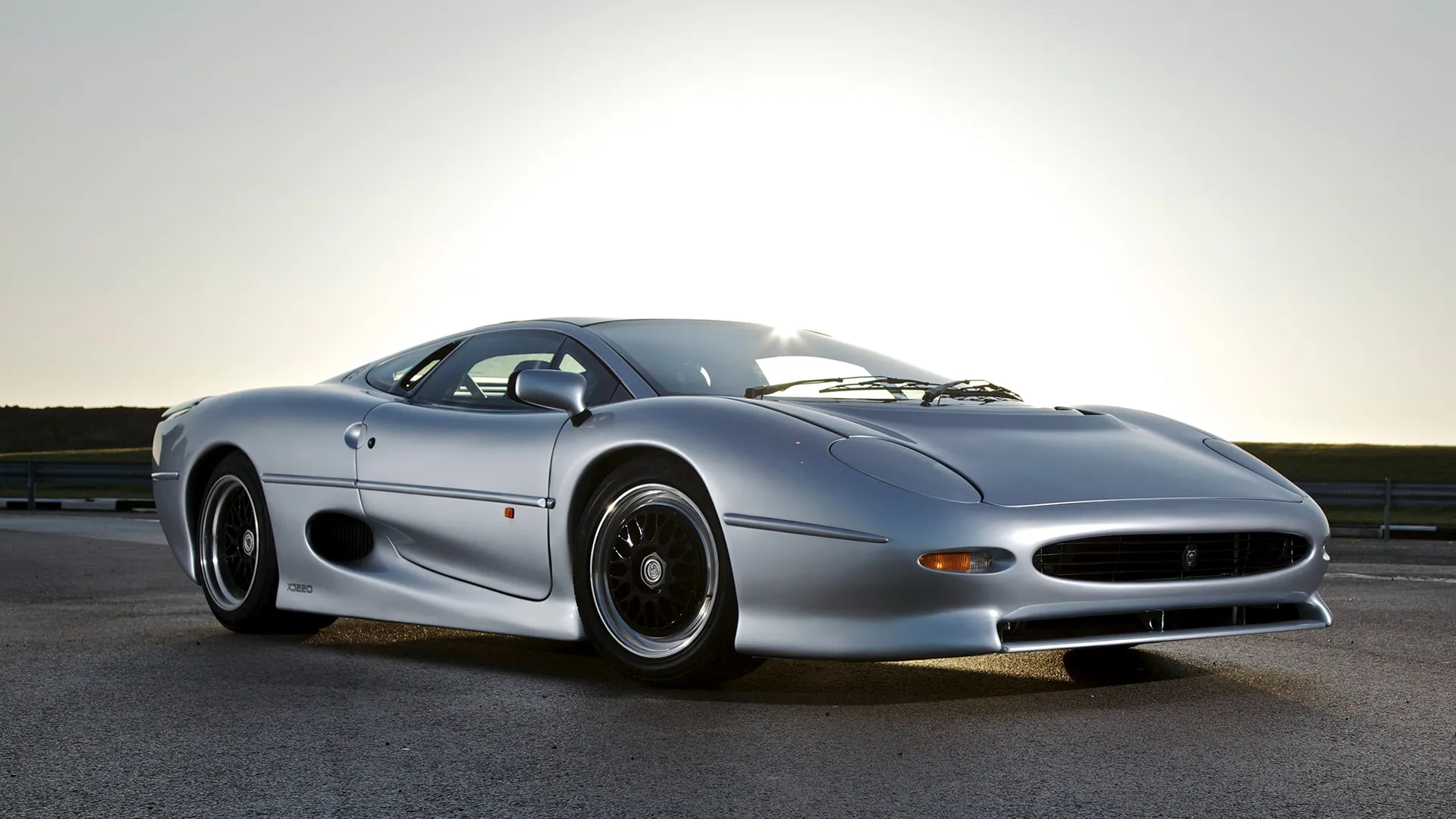
The XJ220’s styling remained true to the concept, with designer Keith Helfet’s sleek, aerodynamic bodywork stretching nearly 16 feet long while standing just 45 inches tall.
Its dramatically long tail (which gave the car its name 220 referred to its targeted top speed in miles per hour) housed advanced aerodynamics that provided substantial downforce without the need for visible wings or spoilers.
The interior was spartan by luxury car standards but purposeful, with a driver-focused cockpit wrapped in Connolly leather.
The XJ220’s story is tragically intertwined with its timing. By the time deliveries began in 1992, the global economy had entered a recession, and supercar values collapsed.
Many deposit-holders attempted to back out of their contracts, leading to legal battles. Ultimately, only 271 of the planned 350 cars were built, and Jaguar reportedly lost money on each one.
The car that had been conceived during the economic exuberance of the 1980s was delivered into a very different world.
Despite its troubled history, the XJ220 has experienced remarkable rehabilitation in recent years.
Collectors have recognized its historical significance, breathtaking performance, and genuine rarity.
Today, it stands as a testament to Jaguar’s ambition during a brief period when the company dared to compete with Ferrari and Lamborghini on their terms a magnificent anomaly in British automotive history that connects the Le Mans-winning heritage of the 1950s with the technological sophistication of the modern era.
4. McLaren F1
The McLaren F1 stands as perhaps the most singularly focused road car ever created by the pure vision of one man, Gordon Murray, executed without compromise.
Conceived not as a racing car for the road but as the ultimate road car, the F1 project began in 1988 when Murray convinced McLaren CEO Ron Dennis that the company should apply its Formula 1 expertise to create a road car unlike any other.
Every aspect of the F1’s design served a purpose, from its centrally positioned driver’s seat (flanked by two passenger seats set slightly behind) to its gold-lined engine bay for optimal heat reflection.
At its heart is a naturally aspirated 6.1-liter BMW V12 engine designed specifically for the F1 by legendary engineer Paul Rosche.
Producing 618 horsepower and mated to a custom six-speed manual transmission, this masterpiece of engineering propelled the F1 to a top speed of 240 mph a record it held for 12 years.
Perhaps more impressive than its outright speed was the car’s character: docile enough for daily driving yet capable of performance that remained benchmark-setting for decades.
The F1’s construction pioneered the use of carbon fiber in road cars, with the entire monocoque weighing just 123 pounds.
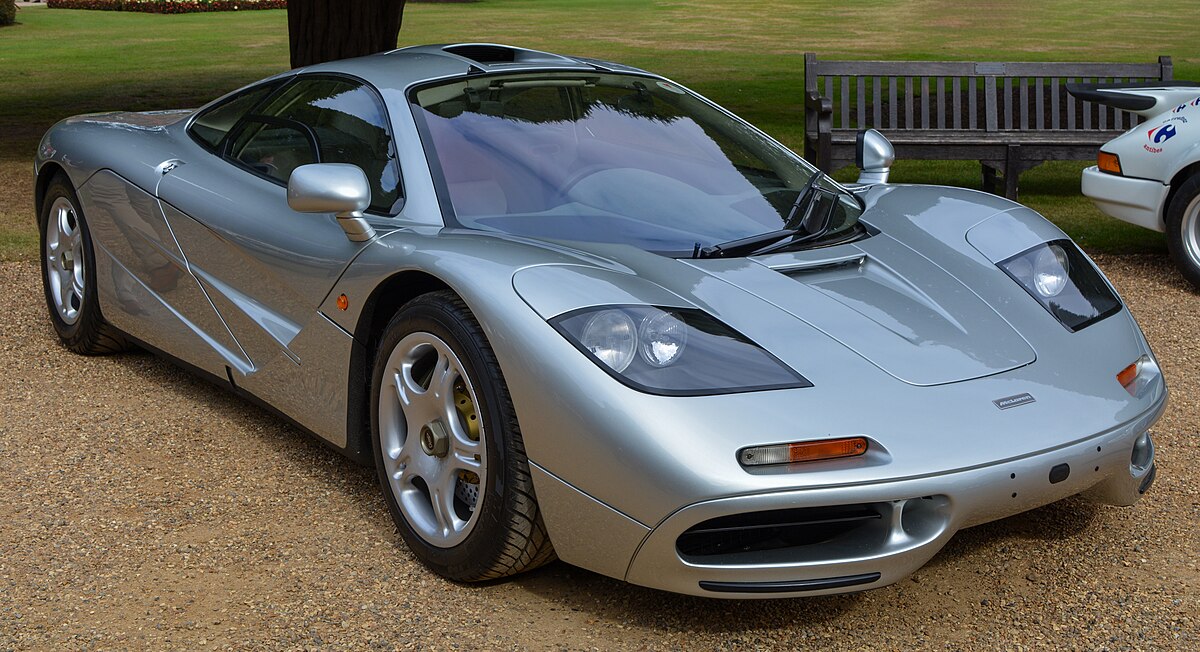
Murray’s obsessive attention to weight saving extended to every component the car used titanium fasteners throughout, magnesium wheels, specially developed lightweight Kenwood stereo components, and even specially manufactured minimalist tools.
The resulting 2,425-pound curb weight gave the F1 a power-to-weight ratio that remained unmatched for years.
What truly raised the F1 to legendary status was its unexpected racing success. Despite being designed as a road car, a racing version the F1 GTR won the 1995 24 Hours of Le Mans against purpose-built prototypes, an extraordinary achievement that solidified the F1’s place in motorsport history.
Between 1992 and 1998, only 106 F1s were built across all variants, including 64 standard road cars, making it exceptionally rare.
The F1’s influence extends far beyond its performance figures. It created the template for the modern hypercar, establishing new standards for engineering excellence, driver engagement, and performance that manufacturers still strive to match today.
Unlike many of its contemporaries that have been overshadowed by technological progress, the F1 remains relevant and desirable decades after its introduction a testament to Murray’s brilliant conception and McLaren’s flawless execution.
It represents the perfect intersection of art, science, and engineering the automotive equivalent of a Renaissance masterpiece.
Also Read: 10 Cars That Were Turned Into Boats, Planes, or Trains
5. Aston Martin V12 Vanquish
The Aston Martin V12 Vanquish arrived at a pivotal moment in the storied British manufacturer’s history.
Revealed in 2001 as the company’s flagship, it represented both a technological leap forward and a design renaissance under new ownership.
The Vanquish was the first production model fully developed during the Ford era and the first completely new Aston design by Ian Callum, establishing the design language that would define the brand for decades to follow.
Its muscular proportions, perfectly balanced stance, and aggressive details created a modern interpretation of Aston Martin’s heritage while avoiding retro clichés.
At the heart of the Vanquish was a magnificent 5.9-liter V12 engine developed with Ford and Cosworth, producing 460 horsepower in standard form and 520 in the later S variant.
This powerplant delivered the performance expected of a flagship Aston 0-60 mph in 4.7 seconds and a top speed of 190 mph but more importantly, it provided the character essential to the brand.
The engine’s smooth, relentless power delivery combined with its distinctive soundtrack a sophisticated, cultured roar rather than the sharp bark of Italian competitors perfectly matched Aston Martin’s grand touring philosophy.
The Vanquish pioneered construction techniques that would influence all subsequent Aston Martins.
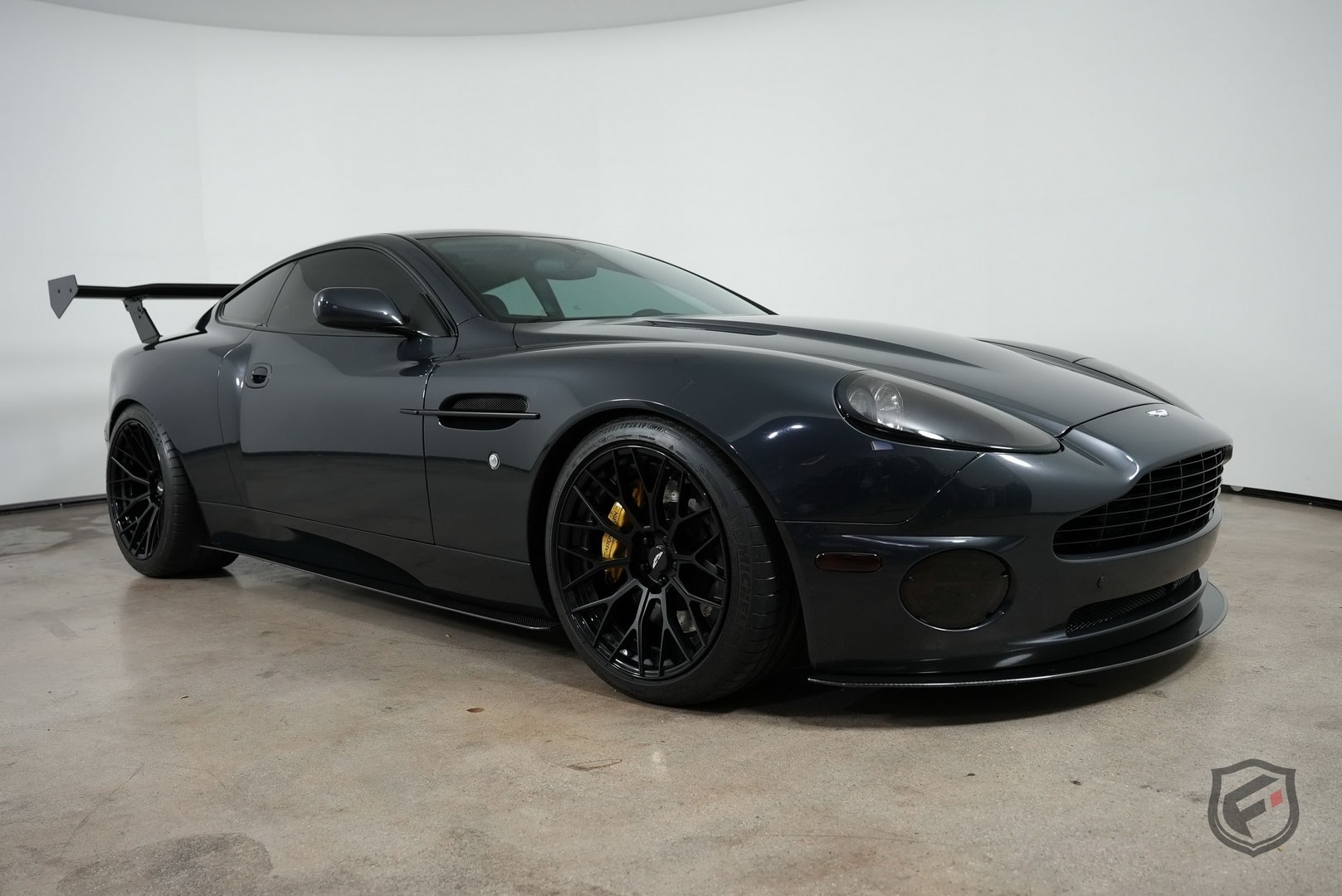
Its aluminum chassis incorporated carbon fiber components and advanced adhesive bonding techniques borrowed from aerospace applications.
The result was exceptional torsional rigidity without excessive weight a foundation that gave the Vanquish both sporting capability and grand touring comfort.
The car achieved international fame as James Bond’s vehicle in “Die Another Day,” continuing Aston’s long association with the 007 franchise.
This exposure introduced the Vanquish to a global audience and cemented its status as an object of desire.
Inside, the interior combined traditional craftsmanship hand-stitched leather, and real metal components with modern technology, creating a cockpit that was both sporting and luxurious.
The Vanquish’s significance extends beyond its technical specifications or performance figures.
It represented Aston Martin’s successful transformation from a small-volume manufacturer barely surviving on heritage to a modern luxury sports car brand with global relevance.
It bridged Aston’s past and future, preserving the company’s core values while modernizing its execution.
Vanquish’s 2,578 examples produced between 2001 and 2007 brought the company back to financial stability and established a template for success that subsequent models would follow.
More than two decades after its introduction, the original Vanquish remains a design benchmark and a pivotal chapter in the evolution of one of Britain’s most beloved automotive brands.
6. BMW 850CSi
The BMW 850CSi represented the ultimate expression of BMW’s engineering prowess in the early 1990s a technological tour de force that pushed the boundaries of what was possible in a grand touring coupe.
Introduced in 1992 as the flagship of the 8 Series range, the CSi wasn’t merely an upgraded version of the standard 850i; it was essentially a different car, developed by BMW’s M division though never officially bearing an M badge.
At its heart was a substantially modified version of the standard 850’s V12, bored out to 5.6 liters and producing 375 horsepower modest by today’s standards but delivered with a smoothness and character that modern turbocharged engines cannot match.
The CSi’s exclusivity was guaranteed through its limited production run, with only 1,510 examples manufactured worldwide between 1992 and 1996.
Each car featured a special engine code (S70B56) reserved for M-developed powerplants, connecting it spiritually to BMW’s motorsport heritage.
The CSi received extensive chassis modifications, including a lower ride height, stiffer springs, unique dampers, quicker steering, and a limited-slip differential.
The result was a car that could provide both high-speed stability on the autobahn and engaging handling on winding roads a delicate balance few grand tourers achieve.
Visually, the 850CSi announced its special status with subtle yet purposeful modifications: a deeper front spoiler, rear diffuser, wider wheels, and unique side skirts enhanced both aesthetics and aerodynamics.
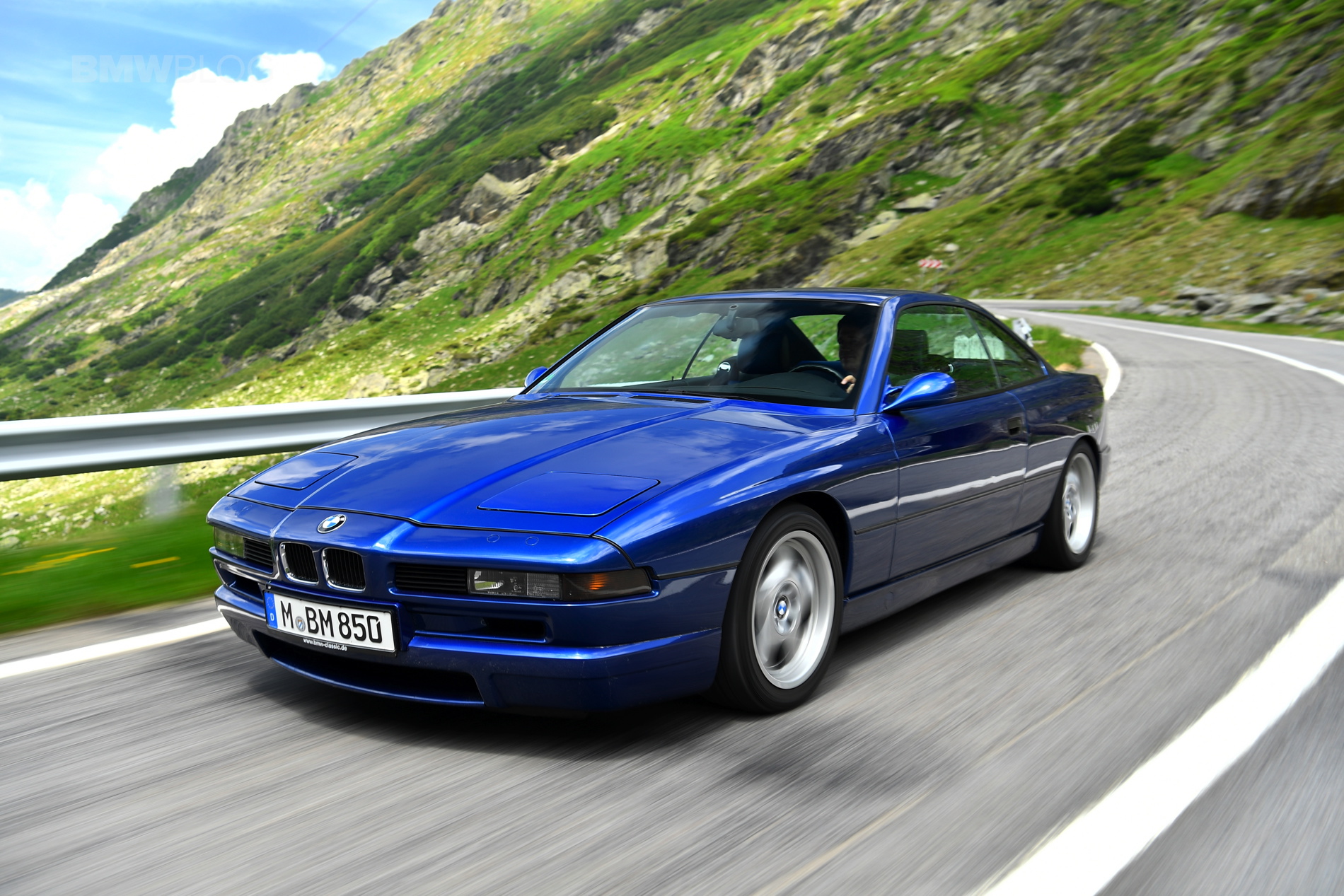
Inside, the cabin epitomized BMW’s driver-focused philosophy with a cockpit angled toward the driver, comprehensive instrumentation, and superb ergonomics features that would influence BMW interiors for decades.
What made the 850CSi truly special was its timing it arrived at the end of an era in automotive engineering before electronic aids and emissions regulations fundamentally changed how performance cars were designed.
It featured a six-speed manual transmission when many competitors offered only automatics, providing an engaging, analog driving experience increasingly rare in luxury coupes.
The car’s development cost reportedly over $1 billion for the 8 Series program was evident in its build quality, engineering integrity, and attention to detail.
The 850CSi was not merely a fast, expensive BMW; it represented the philosophical apex of the brand’s capabilities at a time when engineering excellence took precedence over marketing considerations or production efficiencies.
Its commercial failure (the entire 8 Series never met sales expectations) paradoxically enhances its legendary status as a vehicle too sophisticated, too uncompromising, and ultimately too expensive for the market of its era.
Today, the 850CSi stands as a testament to BMW’s willingness to push boundaries regardless of commercial considerations a spirit enthusiast’s fear may never be fully recaptured.
7. Mercedes-Benz SL73 AMG
The Mercedes-Benz SL73 AMG represents perhaps the most exclusive and mysterious modern Mercedes ever created a vehicle so rare that many enthusiasts doubt its existence until they encounter one.
Built between 1995 and 2001 in extremely limited numbers (less than 100 examples), the SL73 was the ultimate evolution of the R129 SL platform and the crowning achievement of AMG before its full integration into Mercedes-Benz.
What made this car truly special was its engine: a hand-built 7.3-liter naturally aspirated V12 producing 525 horsepower and a massive 553 lb-ft of torque figures that remain impressive even by modern standards.
This legendary powerplant would later find its way into the Pagani Zonda, but the SL73 was the original application, creating a grand touring convertible of unparalleled capability.
The massive engine enabled performance that defied the car’s substantial weight, with 0-60 mph taking just 4.8 seconds remarkable for a luxury convertible of the era.
More impressive than outright acceleration was the engine’s character a seamless, limitless wave of torque that made the SL73 an effortless high-speed cruiser capable of reaching its electronically limited top speed of 155 mph with just a flex of the driver’s right foot.
Unlike modern AMG products that announce their performance credentials with aggressive styling, the SL73 maintained a subtle, understated appearance with only discreet badges, modestly widened fenders, and AMG wheels differentiating it from standard SL models.
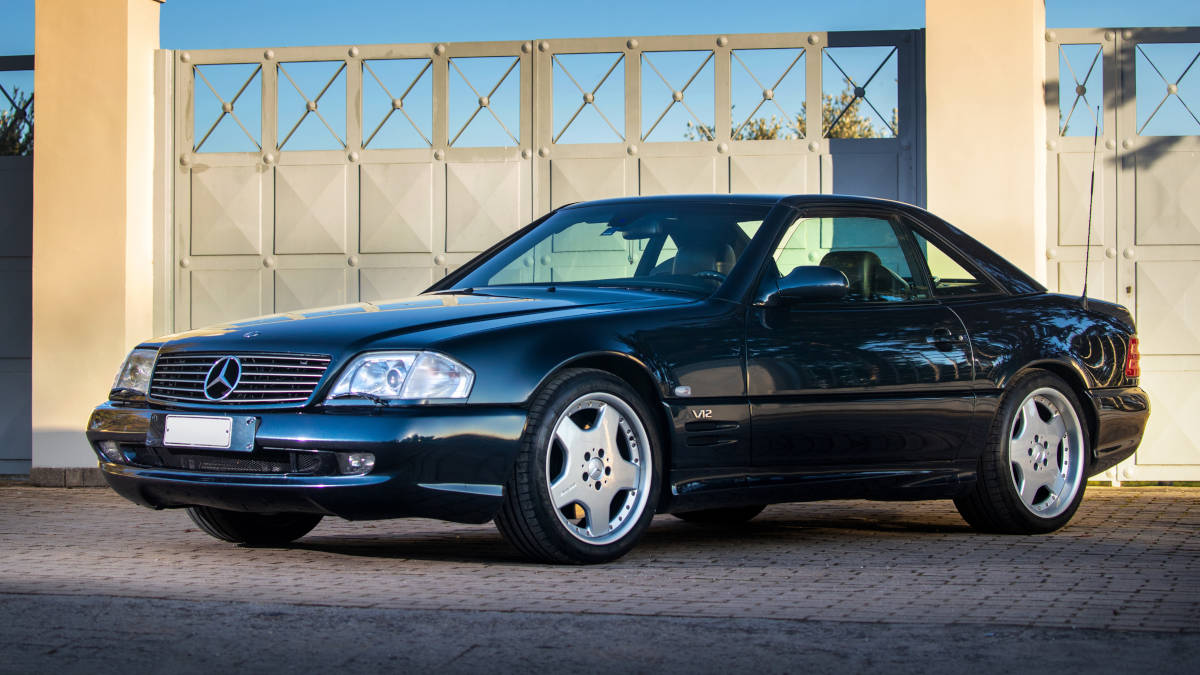
This stealth approach created the ultimate Q-ship a vehicle whose performance capabilities were known only to the most discerning enthusiasts.
The interior continued this theme with subtle AMG touches enhancing Mercedes’ already excellent cabin, maintaining the perfect balance between sportiness and luxury.
The SL73’s astronomical price when new nearly double that of a standard SL600 guaranteed its exclusivity.
Each example was essentially built to order, with most customers adding extensive personalization through Mercedes’ Designo program.
This combination of limited production, hand-built construction, and bespoke specification makes each surviving SL73 unique.
The legacy of the SL73 AMG extends beyond its rarity. Its magnificent engine not only powered the first generation of Pagani Zondas but also established AMG’s reputation for building some of the world’s finest V12 engines a tradition that continued for decades.
The SL73 represents a high-water mark in automotive engineering from an era when Mercedes-Benz prioritized technical excellence above all else.
Today, these vehicles remain among the most sought-after modern Mercedes models, appreciated for their combination of understated style, peerless engineering, and the irresistible appeal of perhaps the greatest V12 engine ever fitted to a production car.
8. Ferrari 550 Maranello
The Ferrari 550 Maranello marked a pivotal return to Ferrari’s roots a front-engined, V12 grand tourer that recaptured the spirit of legendary models like the 365 GTB/4 “Daytona.”
Introduced in 1996, the 550 Maranello arrived at a crucial moment in Ferrari’s history. For the previous two decades, the company’s flagship models had featured mid-engine layouts, culminating in the F512M.
The decision to return to a front-engine configuration for their top V12 model represented both a philosophical shift and an acknowledgment of the grand touring tradition that had defined Ferrari’s early years.
At the heart of the 550, Maranello was a naturally aspirated 5.5-liter V12 producing 485 horsepower, delivering its power through a gated six-speed manual transmission a combination that offered both exhilarating performance (0-60 mph in 4.2 seconds, top speed of 199 mph) and the visceral engagement that defined the analog supercar experience.
The engine’s character was quintessentially Ferrari smooth and tractable at low revs but transforming into something magical as the tachometer needle swept past 4,000 rpm, building to a spine-tingling crescendo at its 7,500 rpm redline.
Pininfarina’s design for the 550 Maranello achieved a perfect balance between elegance and aggression.
The long hood, short rear deck, and subtle curves created a timeless silhouette devoid of superfluous details or excessive aerodynamic elements.

Inside, the cabin combined traditional luxury acres of hand-stitched leather and classic round instruments with the driver-focused layout essential to a proper Ferrari.
The result was a car that could be driven comfortably across continents yet still deliver an intoxicating experience on mountain roads. The 550’s significance extends beyond its specifications.
It arrived during a transformative period for Ferrari, shortly after Luca di Montezemolo had taken control of the company, and represented his vision of what a modern Ferrari should be: a perfect synthesis of performance, luxury, and usability without compromising the brand’s racing heritage.
This philosophy proved enormously successful, with the 550 Maranello and its successor, the 575M, selling 3,083 units combined impressive figures for a hand-built exotic.
The car’s capabilities were validated on the racetrack when privateer teams developed racing versions that achieved remarkable success, including a class win at the 24 Hours of Le Mans.
These racing exploits, combined with its road-going excellence, have established the 550 Maranello as one of the most significant Ferraris of the modern era and one whose value and desirability continue to grow particularly for the increasingly rare examples with low mileage and documented service history.
It represents the perfect intersection of traditional Ferrari values and modern engineering a V12 Ferrari at its purest and most engaging.
9. Rolls-Royce Phantom
The Rolls-Royce Phantom VII, introduced in 2003, represented more than just a new flagship model it symbolized the rebirth of the world’s most prestigious automotive brand under BMW ownership after the tumultuous split of Rolls-Royce and Bentley.
This was the first completely new Phantom since 1968, and it arrived with the enormous responsibility of reestablishing Rolls-Royce’s position at the pinnacle of luxury motoring.
That it succeeded so thoroughly is a testament to BMW’s understanding of what makes Rolls-Royce special and its commitment to preserving its essence while modernizing its execution.
At the heart of the Phantom beat a magnificent 6.75-liter V12 engine producing 453 horsepower, designed specifically for Rolls-Royce and engineered to deliver torque effortlessly from just above idle.
The engine’s character perfectly matched Rolls-Royce tradition immensely powerful but virtually silent, making its presence known only through relentless, smooth acceleration.
The driving experience was defined by a sensation BMW engineers termed “waftability” the ability to move with imperious authority regardless of road conditions or speed.
The Phantom’s design, led by Ian Cameron, masterfully reinterpreted classical Rolls-Royce elements for the 21st century.
The commanding upright grille, Spirit of Ecstasy hood ornament, coach doors (hinged at the rear), and imposing proportions created an unmistakable presence that announced the car’s significance without resorting to ostentation.
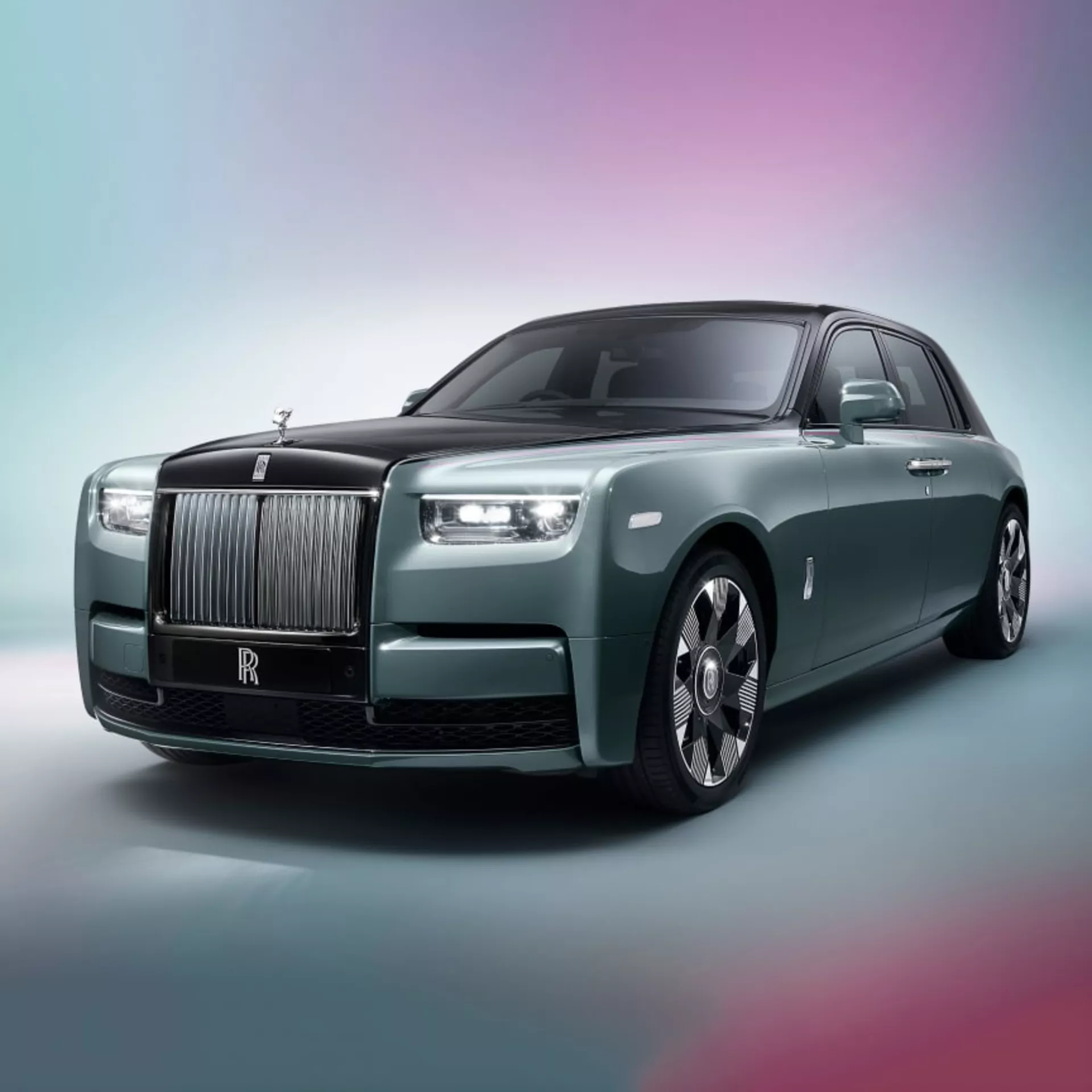
Built on a unique aluminum spaceframe platform, the Phantom combined exceptional rigidity with relatively lightweight, enabling both supreme comfort and surprising agility for a vehicle of its size.
Inside, the Phantom redefined automotive luxury. Each car required at least 450 hours to build, with craftspeople using materials of uncompromising quality leather from bulls raised in high-altitude, barbed wire free environments to prevent blemishes; wood veneers from single trees to ensure matching grain; and lambswool carpets so thick that feet sink into them.
The starlight headliner, featuring hundreds of hand-placed fiber optic lights, became an iconic Rolls-Royce feature.
Modern technology was seamlessly integrated but kept discreetly out of sight when not needed.
The Phantom’s cultural impact extended far beyond the automotive world. It became the definitive symbol of success across global cultures, appearing in film, music, and popular culture as the ultimate expression of achievement.
Rolls-Royce, successfully bridged the past and future, preserving the brand’s heritage while establishing a sustainable business model under BMW’s stewardship.
The Phantom VII’s 14-year production run saw approximately 10,000 examples built each one unique thanks to the company’s bespoke program that allowed customers to specify virtually every aspect of their car.
It stands as one of the most significant luxury goods of the early 21st century a product that defined not just a segment but an entire notion of modern luxury.
10. Aston Martin DB9
The Aston Martin DB9, introduced in 2004, represents one of the most pivotal models in Aston Martin’s 108-year history the car that transformed the company from a low-volume, financially troubled manufacturer into a genuine luxury powerhouse.
Developed under Ford ownership but expressing a distinctly British character, the DB9 was the first model built at Aston’s purpose-built Gaydon headquarters and the first constructed on the innovative VH (Vertical/Horizontal) platform that would underpin Aston Martins for more than a decade.
Henrik Fisker’s timeless design for the DB9 achieved something remarkable: unmistakably an Aston Martin, it paid homage to the company’s heritage without being trapped by it.
The perfectly proportioned grand tourer featured flowing lines, minimal decoration, and subtle muscularity a design so successful that its basic form remained in production for twelve years with only minor updates.
The DB9’s aesthetic appeal transcended automotive circles, winning industrial design awards and establishing Aston Martin as a contemporary luxury brand rather than merely a purveyor of nostalgic sports cars.
The heart of the DB9 was its magnificent 5.9-liter V12 engine, initially producing 450 horsepower and eventually 510 in later models.
This powerplant delivered not just impressive performance 0-60 mph in 4.7 seconds, 183 mph top speed but a character perfectly suited to the car’s grand touring mission.
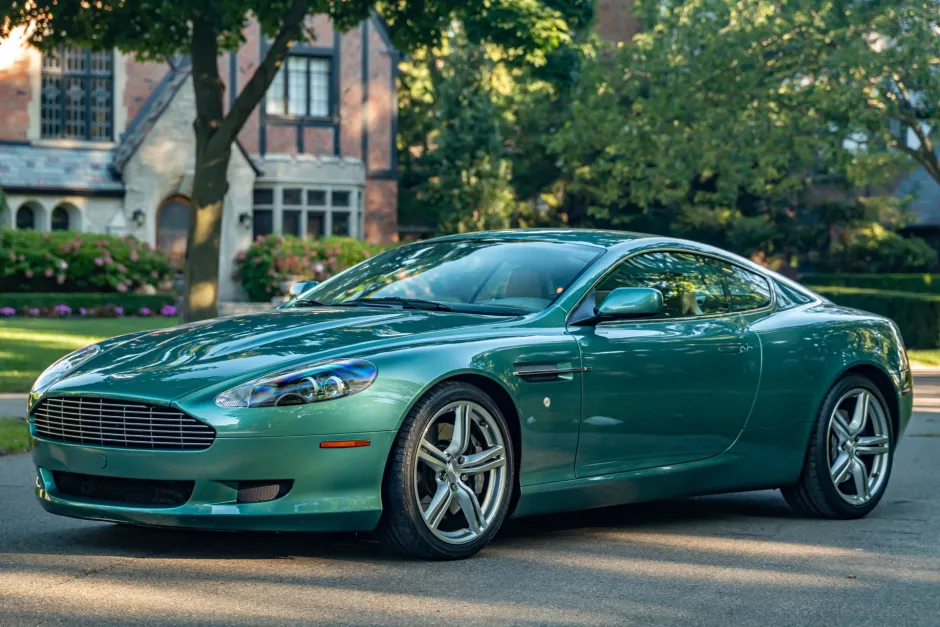
The engine’s distinctive soundtrack, a sophisticated growl that built to a thrilling howl at high revs, became a defining characteristic of modern Aston Martins.
Paired with either a traditional six-speed manual or a six-speed automatic transmission, the DB9 offered both engaging driver involvement and effortless long-distance capability.
Inside, the DB9 established a new design language for Aston Martin interiors. The trademark “swan” doors that swung slightly upward as they opened, the crystal starter button, and the distinctive instrument cluster created a theatrical experience before driving even began.
The materials throughout the cabin bridge of Weir leather, real aluminum, and optional woods reflected traditional British luxury while the design remained contemporary and driver-focused.
The DB9’s significance extends beyond its commercial success with over 16,500 units sold across coupe and Volante convertible versions.
It successfully repositioned Aston Martin for the 21st century, attracting a new generation of customers and establishing the company’s design, engineering, and brand values for decades to follow.
Today, first-generation DB9s have reached the bottom of their depreciation curve and represent remarkable value handcrafted, V12-powered grand tourers whose timeless design ensures they will never look dated.
The DB9 will ultimately be remembered as the car that saved Aston Martin, securing the future of one of Britain’s most cherished automotive brands.
11. Ferrari Enzo
The Ferrari Enzo revealed in 2002, stands as the purest expression of Ferrari’s Formula 1 technology and philosophies transferred to a road-legal production car.
Named after the company’s founder the first Ferrari to bear this honor the Enzo was designed with a singular focus: to deliver the most thrilling driving experience possible, even at the expense of comfort or practicality.
Unlike Ferrari’s previous flagship F50, which was built as an actual F1 car with a passenger seat, the Enzo incorporated F1 technology in a more road-oriented package, creating a vehicle that was both more usable and, ultimately, faster.
At its heart was a naturally aspirated 6.0-liter V12 producing 651 horsepower a staggering figure for a naturally aspirated engine of the era.
This powerplant featured technologies derived directly from Ferrari’s F1 program, including variable valve timing, titanium connecting rods, and a variable intake manifold.
The result was an engine with a character unlike any other ferociously responsive, with a spine-tingling shriek that reached its crescendo at 8,200 rpm.
Power was delivered through a Formula 1-inspired automated manual transmission with paddle shifter technology that was revolutionary for road cars at the time.
The Enzo’s radical styling prioritized aerodynamic functionality over conventional beauty.
Designer Ken Okuyama at Pininfarina created a shape dictated by wind tunnel testing, incorporating active aerodynamics and Formula 1-inspired elements like the prominent nose and teardrop-shaped cockpit.
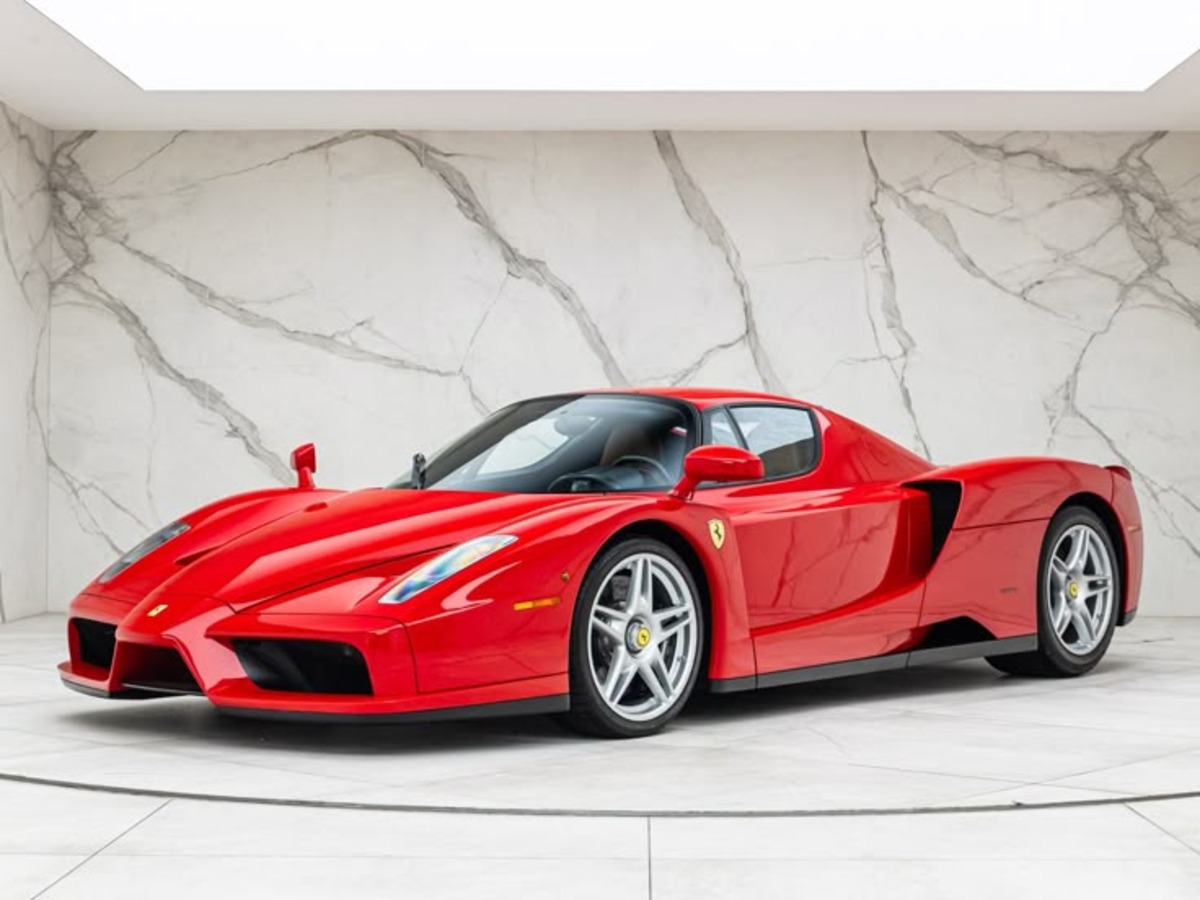
The doors opened upward and forward in a dramatic fashion, revealing a cabin that was spartan by luxury car standards but focused entirely on the driving experience.
Carbon fiber racing seats, a steering wheel bristling with controls (another F1 influence), and minimal concessions to comfort reinforced Enzo’s purpose as a road-legal race car.
With only 400 examples produced (plus an additional 51 “FXX” track-only versions), the Enzo’s exclusivity was guaranteed from the start.
Ferrari’s selection process for buyers was notoriously strict, with purchase rights offered only to the marque’s most loyal customers.
This approach created an instant collector car whose value began appreciating almost immediately after production ended.
The Enzo’s importance transcends its performance specifications or limited production numbers.
It represented Ferrari at its most uncompromising a halo product that demonstrated the company’s engineering capabilities and reinforced its Formula 1 connection at a time when the Scuderia was dominating the sport.
It established a template for subsequent Ferrari flagships like the LaFerrari, creating a lineage of limited-production hypercars that showcase the absolute pinnacle of the company’s technological capabilities.
The Enzo remains a benchmark the hypercar against which all others are measured, a rolling testament to Ferrari’s commitment to pushing the boundaries of what’s possible in a road-legal automobile.
12. Pagani Zonda
The Pagani Zonda emerged in 1999 as an audacious challenge to the established supercar hierarchy from an unknown Argentinian-born designer working out of a small facility in Modena, Italy.
The creation of Horacio Pagani, a former Lamborghini composite materials specialist, the Zonda represented a fundamentally different approach to supercar design one that prioritized artistry, craftsmanship, and attention to detail above all else.
While other manufacturers were embracing computerization and mass production techniques, Pagani chose to create cars as artistic masterpieces, with every component no matter how small or hidden designed and finished to perfection.
At the heart of the Zonda beat a magnificent naturally aspirated Mercedes-AMG V12 engine, initially a 6.0-liter unit producing 450 horsepower in the original C12 model, eventually evolving into a 7.3-liter behemoth producing up to 789 horsepower in later variants.
This powerplant, developed from the engine used in the Mercedes-Benz SL73 AMG, gave the Zonda both extraordinary performance capabilities and a uniquely musical exhaust note a hauntingly beautiful V12 symphony that became one of the car’s defining characteristics.
The engine was paired with a traditional manual transmission in early models, with later versions offering automated manual options.
The Zonda’s carbon-titanium monocoque chassis represented a revolution in composite materials, providing exceptional rigidity and crash protection while keeping weight to a minimum.
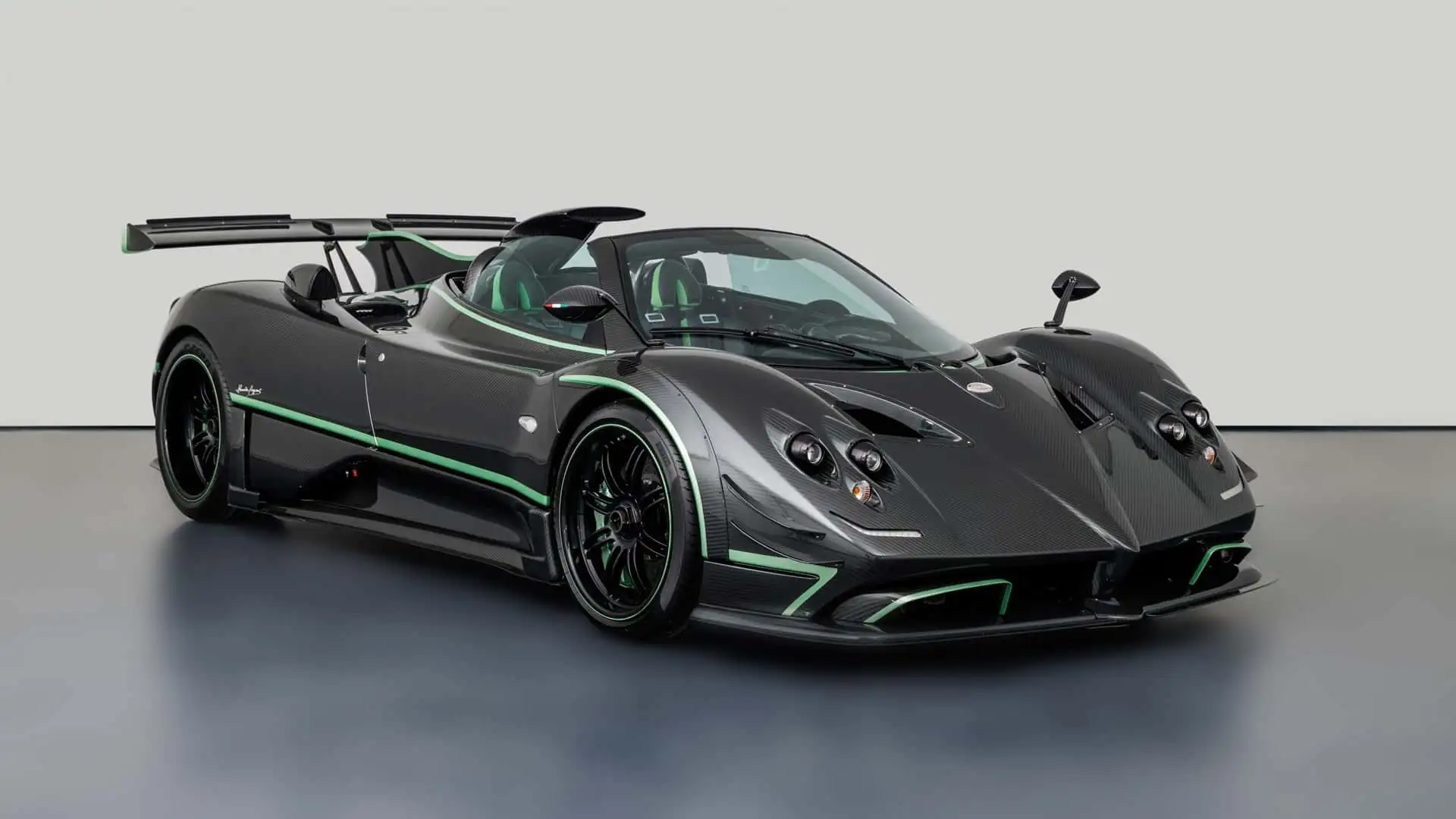
The resulting performance was breathtaking, with late-model Zondas capable of reaching 60 mph in under 3 seconds and achieving top speeds of over 220 mph.
Yet more remarkable than the numbers was the driving experience an analog, visceral connection between driver and machine that became increasingly rare in the supercar world.
What truly separated the Zonda from its contemporaries was its obsessive attention to detail.
The exposed gear linkage, machined from a solid billet of aluminum, became a signature feature that showcased Pagani’s commitment to transforming mechanical components into works of art.
The interior featured a blend of carbon fiber, leather, and aluminum that created a steampunk-meets-aerospace aesthetic unlike anything else on the road.
Each switch, dial, and control was a tactile delight many custom-crafted specifically for the Zonda rather than sourced from a parts bin.
The Zonda’s production run stretched from 1999 to 2019, with Pagani continually evolving and improving the design through numerous variants and one-offs.
This two-decade lifespan is extraordinary for a supercar and reflects both the fundamental rightness of the original design and Pagani’s willingness to continue perfecting his creation.
With fewer than 150 examples produced across all variants, the Zonda remains one of the rarest modern supercars a hand-built masterpiece that demonstrated how artisanal craftsmanship could coexist with cutting-edge technology, creating something greater than either approach could achieve alone
Also Read: 12 Craziest Car-Themed Hotels and Museums Around the World

